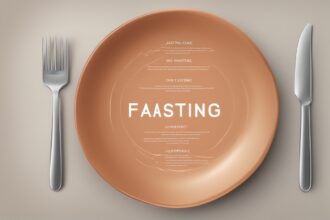Have you ever wondered how skipping a meal or two could potentially transform your health? Fasting, a practice as old as humanity itself, has gained massive popularity in recent years for its potential benefits, ranging from weight loss to improved mental clarity. With so many approaches to choose from, understanding the different types of fasting can help you find the method that best fits your lifestyle and health goals. In this comprehensive guide, I’ll walk you through the most common fasting methods, dive into the science behind them, and offer practical tips to make fasting a sustainable part of your routine. Whether you’re a beginner or a seasoned faster, there’s something here for everyone.
What Is Fasting and Why Does It Matter?
Fasting is the voluntary abstinence from food and, in some cases, drink for a specific period. It’s not just about weight loss—though that’s often a perk. Research suggests fasting can trigger a process called autophagy, where cells clean out damaged components, potentially reducing the risk of chronic diseases (Mattson et al., 2017). It’s also been linked to improved insulin sensitivity and reduced inflammation, making it a powerful tool for metabolic health (Patterson & Sears, 2017). But not all fasting methods are created equal. The various types of fasting cater to different needs, schedules, and health objectives. Let’s explore the most popular ones and see how they might work for you.
Intermittent Fasting: The Most Popular Approach
Intermittent fasting (IF) is arguably the most well-known among the types of fasting today. It involves cycling between periods of eating and fasting, and it’s incredibly flexible. The most common IF method is the 16/8 protocol, where you fast for 16 hours and eat during an 8-hour window. For example, you might eat between noon and 8 p.m., then fast until the next day. Studies show that IF can support weight loss and improve markers of heart health by reducing blood pressure and cholesterol levels (Tinsley & La Bounty, 2015). What makes IF so appealing is its adaptability—you don’t have to give up your favorite foods, just adjust when you eat them.
If you’re new to IF, start slow. Try a 12/12 split (12 hours fasting, 12 hours eating) before progressing to 16/8. Keep hydrated during fasting hours, and focus on nutrient-dense meals during your eating window to avoid energy crashes. Remember, consistency is key, and it’s okay to tweak the schedule to fit your life.
Prolonged Fasting: Going Deeper for Detox and Reset
Prolonged fasting, also known as extended fasting, involves abstaining from food for 24 hours or more—sometimes up to several days. This isn’t for the faint of heart and should only be done under medical supervision if extended beyond 72 hours. The science behind prolonged fasting suggests it may enhance autophagy more significantly than shorter fasts, potentially aiding in cellular repair (Longo & Mattson, 2014). Some also report a mental “reset,” feeling more focused after breaking the fast. However, it’s critical to approach this with caution, as prolonged fasting can lead to nutrient deficiencies or fatigue if not done properly.
For those curious about this type of fasting, preparation is essential. Here are a few tips to consider before embarking on a prolonged fast:
- Consult a healthcare provider, especially if you have underlying health conditions.
- Start with shorter fasts to build tolerance before attempting a multi-day fast.
- Stay hydrated with water or electrolyte solutions to prevent dehydration.
- Break the fast gently with light, easily digestible foods like broth or fruit.
Time-Restricted Eating: A Gentle Entry to Fasting
Time-restricted eating (TRE) is often considered a subset of intermittent fasting but deserves its own spotlight among the types of fasting. It focuses on limiting your daily eating window—typically to 6–10 hours—while fasting the rest of the time. Unlike stricter fasting methods, TRE doesn’t necessarily involve calorie restriction; it’s more about aligning your meals with your body’s natural circadian rhythm. Research indicates that TRE can improve metabolic health and support weight management by reducing late-night snacking, a common culprit for weight gain (Wilkinson et al., 2020).
What I love about TRE is how seamless it can be. If you’re someone who struggles with strict diets, simply aim to finish your last meal by 7 p.m. and avoid eating until 9 or 10 a.m. the next day. This naturally creates a fasting window without feeling like a chore. Pair this with mindful eating practices, and you’ve got a sustainable habit in the making.
Religious and Cultural Fasting: Tradition Meets Health
fasting isn’t just a modern health trend; it’s deeply rooted in cultural and religious practices worldwide. Think of Ramadan in Islam, where individuals fast from dawn to dusk for a month, or Lent in Christianity, which often involves abstaining from certain foods. These types of fasting often combine spiritual growth with physical discipline. While the primary goal isn’t always health, studies suggest that practices like Ramadan fasting can lower blood sugar levels and improve lipid profiles in healthy individuals (Faris et al., 2012).
For those participating in religious fasting, balancing spiritual intent with physical well-being is crucial. Here are some practical ways to stay healthy during such fasts:
- Focus on hydration during non-fasting hours to prevent headaches or fatigue.
- Choose balanced meals with protein, fiber, and healthy fats to sustain energy.
- Listen to your body—if you feel unwell, consider lighter fasting or seek guidance.
- Avoid overeating when breaking the fast to prevent digestive discomfort.
Water Fasting and Juice Fasting: Extreme but Effective?
Among the more intense types of fasting are water fasting and juice fasting. Water fasting involves consuming only water for a set period, often 24–72 hours, while juice fasting allows for fruit and vegetable juices to provide minimal calories and nutrients. Both are often marketed as “detox” methods, though the scientific community remains skeptical about the need for detoxification through fasting. That said, short-term water fasting has shown promise in reducing oxidative stress and inflammation in small studies (Longo & Mattson, 2014). However, these methods carry risks like dizziness, nutrient deficiencies, and muscle loss if prolonged.
My advice? Approach these with caution and never attempt them without preparation or professional guidance. They’re not sustainable long-term, but for a short reset under supervision, they might have a place for some. Always prioritize safety over trends when exploring these fasting styles.
Studies and Surveys: What Does the Research Say About Fasting?
Let’s take a closer look at the evidence supporting the benefits of different types of fasting. A 2019 study published in the New England Journal of Medicine reviewed the effects of intermittent fasting on health and aging. The researchers found that intermittent fasting could improve insulin resistance, reduce oxidative stress, and even delay the onset of age-related diseases in animal models and early human trials (de Cabo & Mattson, 2019). While more long-term human studies are needed, these findings suggest that fasting may do more than just help with weight loss—it could play a role in longevity.
Additionally, a 2020 survey conducted by the International Food Information Council (IFIC) revealed that 10% of Americans had tried intermittent fasting in the past year, making it one of the most popular dietary trends. Participants reported motivations ranging from weight management to improved energy levels, though adherence varied based on lifestyle factors. This highlights the growing interest in fasting methods and the need for personalized approaches to ensure success (IFIC, 2020). These insights underscore why understanding the various fasting options is so valuable—you can tailor them to fit your unique needs.
As we wrap up this deep dive into the world of fasting, it’s clear that there’s no one-size-fits-all approach. Whether you’re drawn to the simplicity of time-restricted eating, the flexibility of intermittent fasting, or the spiritual depth of religious fasts, the types of fasting offer something for everyone. The key is to start small, listen to your body, and consult a healthcare professional if you’re unsure or have medical conditions. Fasting can be a powerful tool for health and mindfulness, but it’s not a quick fix. Experiment with different methods, track how you feel, and build a routine that supports your long-term wellness goals. Which fasting style are you most curious to try? Let’s keep the conversation going—share your thoughts or experiences below!
References
- de Cabo, R., & Mattson, M. P. (2019). Effects of intermittent fasting on health, aging, and disease. New England Journal of Medicine, 381(26), 2541–2551.
- Faris, M. A., Kacimi, S., Al-Kurd, R. A., et al. (2012). Intermittent fasting during Ramadan attenuates proinflammatory cytokines and immune cells in healthy subjects. Nutrition Research, 32(12), 947–955.
- International Food Information Council (IFIC). (2020). 2020 Food & Health Survey. Retrieved from https://foodinsight.org/2020-food-and-health-survey/
- Longo, V. D., & Mattson, M. P. (2014). Fasting: Molecular mechanisms and clinical applications. Cell Metabolism, 19(2), 181–192.
- Ageing Research Reviews, 39, 46–58.
- Patterson, R. E., & Sears, D. D. (2017). Metabolic effects of intermittent fasting. Annual Review of Nutrition, 37, 371–393.
- Tinsley, G. M., & La Bounty, P. M. (2015). Effects of intermittent fasting on body composition and clinical health markers in humans. Nutrition Reviews, 73(10), 661–674.
- Wilkinson, M. J., Manoogian, E. N. C., Zadourian, A., et al. (2020). Ten-hour time-restricted eating reduces weight, blood pressure, and atherogenic lipids in patients with metabolic syndrome. Cell Metabolism, 31(1), 92–104.






